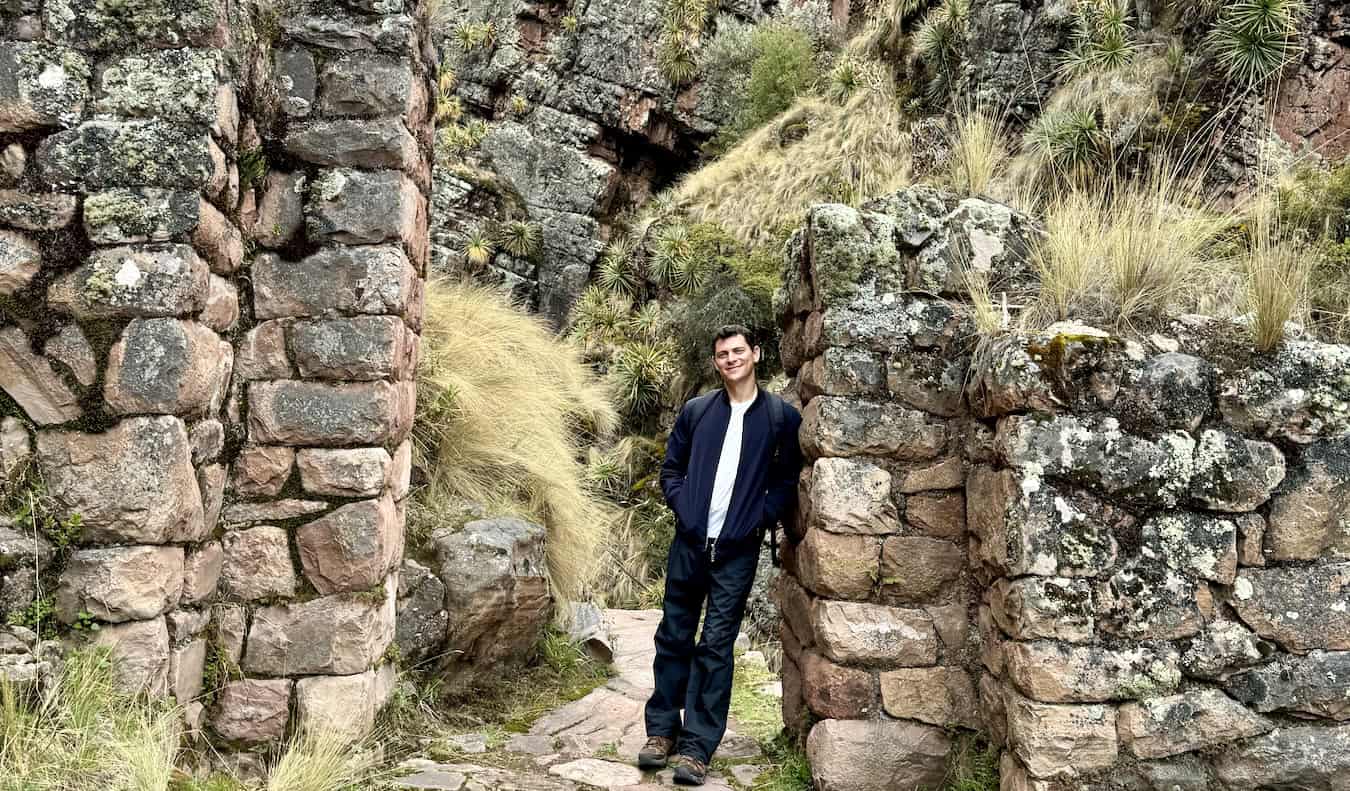
“How high is this hike again?” I asked as I panted up the mountain trail, the top seeming so far off in the distance.
“12,0000 feet,” our guide Efrain said cheerily as he and the others from the Amazonas Explorers office glided up the trail. “But it flattens out soon!” he added as a bit of encouragement.
I was skeptical.
When I first reached out to Amazonas regarding my Machu Picchu hike, I asked them to pick a route that was a little off the beaten path and could be done in a day. There are lots and lots to choose from in the Sacred Valley after all; the Incas built over 40,000 kilometers of roads through their empire, and many of them have become hiking trails.
The full-day hike selected was less traveled than others and would take us to the archaeological site called Huchuy Qosqo (“Little Cusco” in Quechua). Starting an hour outside of Cusco in the small village of Taucca, it goes over some mountains, through abandoned villages and a delightful ravine full of Incan ruins, and winds over a ridge before getting to our final destination: Huchuy Qosqo.
Beginning in the village, we hiked straight up to our first waypoint. We were at the highest altitude I had ever been in my life (higher than Machu Picchu), and, despite having been in the region for a week, I was feeling it, needing to take frequent breaks while I wheezed my way up the mountain. Thankfully, the sky was overcast and hid the sun while the gentle wind kept me cool.
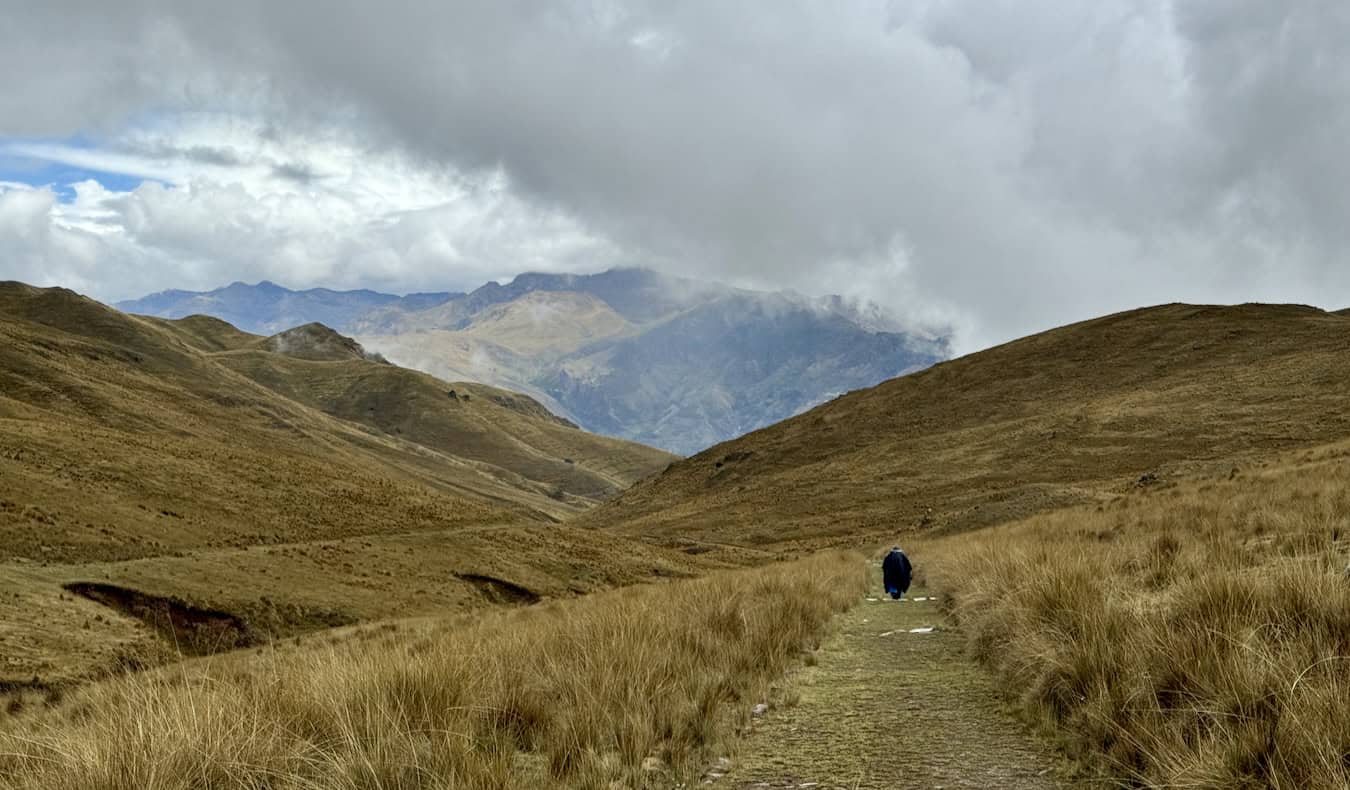

But the frequent stops only made it easier to appreciate the landscape around me. The higher we went, the better views we got of the land below and the mountains around us. At this altitude, not much grows, and the barren, arid landscape kind of reminded me of the plains of Wyoming and New Zealand’s Tongariro hike. Craggy mountains unfolded as far as the eye could see and below us were villages and farms.
“The lake in front of the town is part of a hydroelectric dam,” Efrain said. “Most people here are farmers, mostly for the local market and potatoes. The bigger farms that export the food you buy in the States are elsewhere in the valley.”
After the first trail marker (is really just a telephone pole marking our first stop), the trail flattened out a bit and I got into a deep conversation about food with Patrice, one of the Amazonas employees. She had a lived in the States, so we discussed the quality of food in Peru versus the United States. (She found the food in Peru better because it was less processed. It was hard to disagree.)
“All the foods you call superfood and spend a lot of money on, we just call food. We’ve been eating it since Inca times.”
As we made our way across the arid expanse, it grew more mountainous, though the trail followed what looked like the remnants of a ravine. The path began to gently slope downward, whereupon trees and flowers began to appear, as well as ancient Incan walls and foundations to building long since gone. Soon, we came across a mostly abandoned village made of collapsed mud structures and caved-in straw roofs.
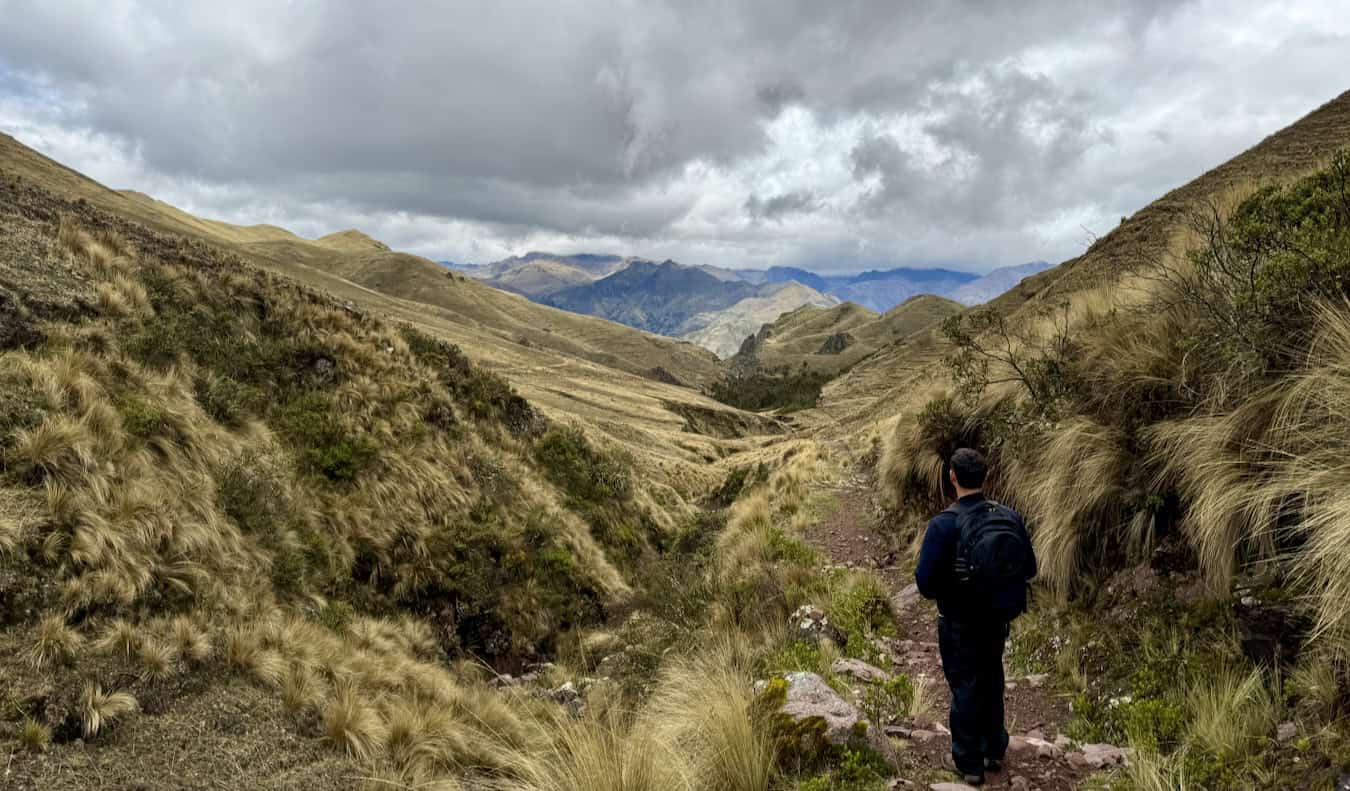

Villages like this are common throughout the region, where people live a subsistence lifestyle. But as young people move to the cities, they die off, and most of the structures are left in various states of disrepair. Efrain said there were only a few families left in this community. The only people we saw the entire time were two women in traditional attire herding some goats.
At the end of the village, we came across what Efrain described as an old Incan guardhouse, where we stopped for lunch near a small waterfall and watched as the women’s goats grazed in front of us, all of us enjoying our respective meals.
After we ate and had a lively discussion about Westerners coming to Peru for ayahuasca ceremonies — and how they don’t always incorporate the spiritual essence but just want to get high — we continued on through an ancient Incan doorway that led to the final part of our trek to Huchuy Qosqo.
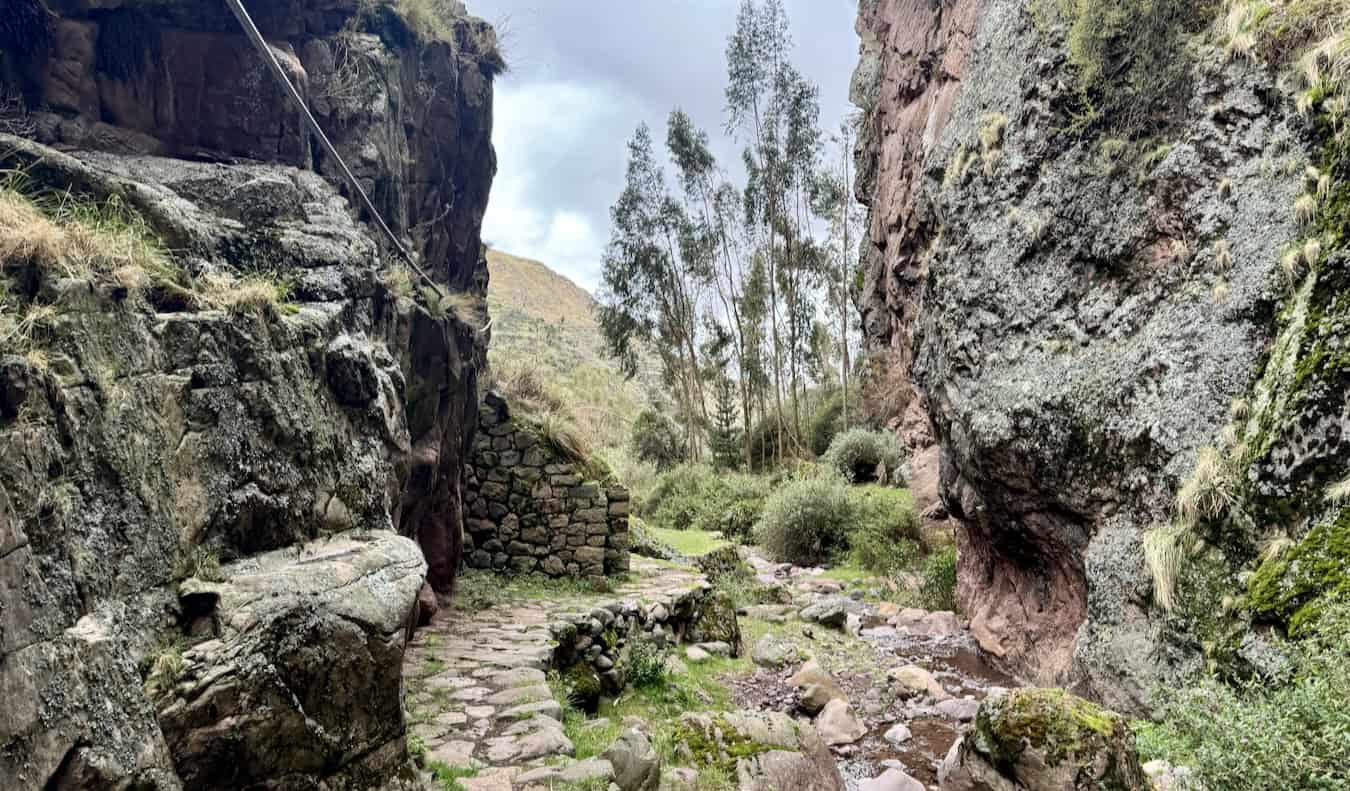

“This was probably a military guardhouse,” Efrain explained as we passed through it and descended a series of steps down into a canyon. “Structures like this were used to protect the people inside the canyon as well as keep track of their numbers to ensure they had enough food for everyone. The Incas were great counters and took detailed censuses to ensure the food supply.”
As we followed the path and the small river that originated from our lunch-spot waterfall, I couldn’t help but be overwhelmed with joy. I was having the best day out of my entire trip to Peru. While Machu Picchu and the trek there were very special, this one felt much more so. The scenery was spectacular, I got a peek at rural life and traditional attire, and we were the only people on the trail, which made the trek feel extra special.
Efrain pointed out age-old Incan stone terraces as we made our way along the trail, which eventually widened, giving us a view of the start of the Sacred Valley — which surprised me, because I had not noticed that the “canyon” we were walking through suddenly steeply dropped off. While I thought we were slowly descending to the base of the mountain, we were still thousands of feet above the valley floor!
After gazing at the valley, we continued across the Incan terraces that lined the mountain walls toward Huchuy Qosqo. I’m always amazed at how they transformed this place, adding in underground watering paths, irrigation systems, and stairs to move between terraces. The food grown here would have fed the surrounding area as well as Huchuy Qosqo.
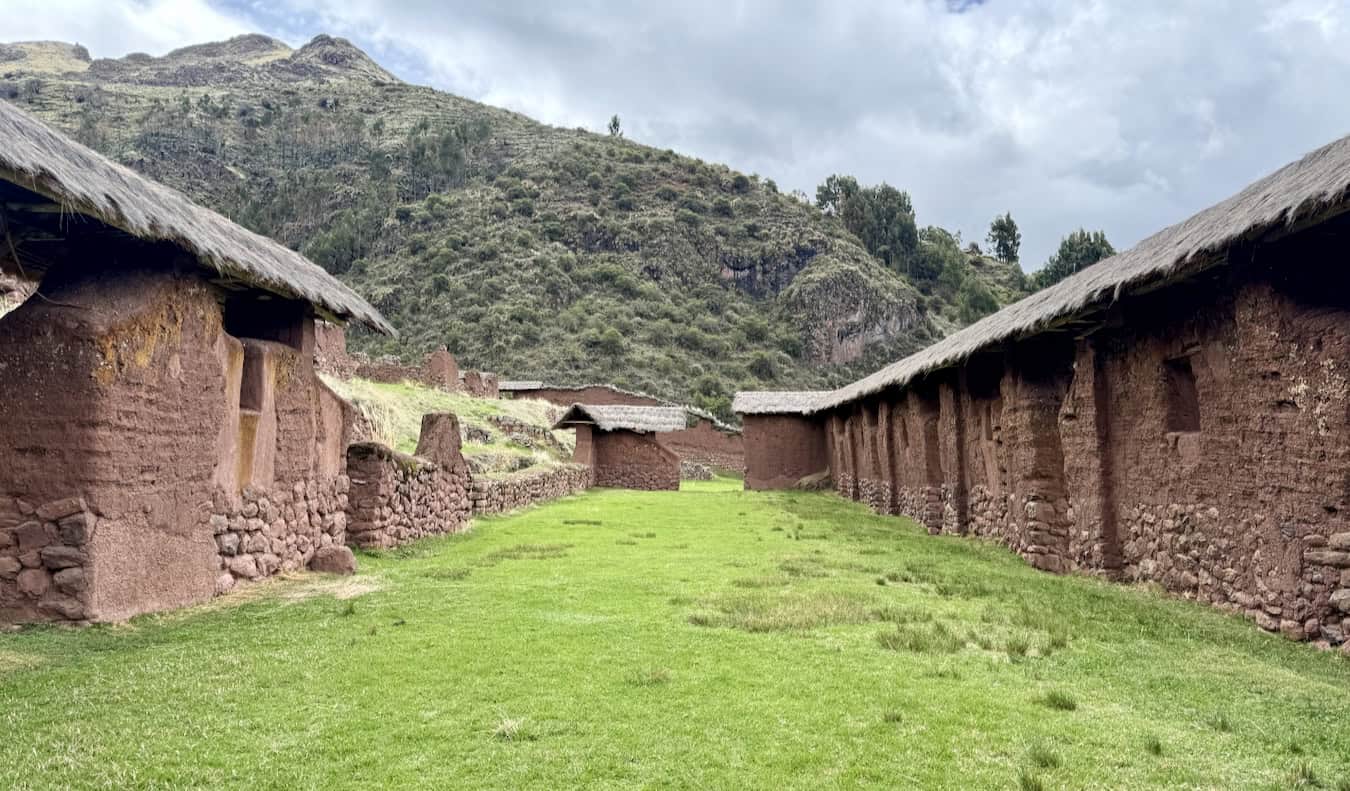

We entered the ruined city through an old gate. Little is known about Huchuy Qosqo but, according to the records we do have, it was home to the Inca ruler Viracocha, who was exiled here after his youngest son, Pachacuti, won a decisive victory against people rebelling against his father.
After the battle, Pachacuti declared himself king and his father spent the last of his days in Huchuy Qosqo, which was also one of the last settlements built with mud-covered stone walls (Pachacuti decided to start building the famed stone-wall Inca structures we are familiar with today). After the collapse of the Inca Empire, it was eventually raided and used by the Spanish, who destroyed most of the buildings in 1534.
Like the rest of the trail, we were the only ones at the site besides the guards. We didn’t stay long, as the site wasn’t as impressive as the journey there, and I was tired and ready to head back to Cusco.
We gathered our fellow hikers and started our descent down the mountain, through a series of steep switchbacks that did a number on my knees to the actual bottom of the canyon, where our driver picked us up.
“What an incredible hike!” I exclaimed on the ride back.
As I stared out the window at passing villages, I had a giant smile on my face. This hike was my favorite experience I had in Peru and, with only two days left in the country, I was content to leave feeling like I got to do something so special.
How to Hike to Huchuy Qosqo
You can go with a guide or on your own, though I wouldn’t advise the latter. While you can easily take a cab from Cusco to the starting point and grab a bus back at the end point, the trail is hard to find (and sometimes, especially at the beginning, it disappears) and there are absolutely no signs anywhere. Even at Huchuy Qosqo, there are no signs describing what you are looking at, the landscape, or the history of the ruins. If you want any context, you’ll need a guide. Like for Machu Picchu, I went with Amazonas Explorer.
Note: Take sunscreen! I came back to my hotel burnt to a crisp. Lobsters aren’t even as red as I was. I forgot to put sunscreen on because it was cloudy and rainy and I didn’t feel the sun, but at this altitude, the UV is very strong and I paid the price for it. Don’t be like me!
Book Your Trip to Peru: Logistical Tips and Tricks
Book Your Flight
Use Skyscanner to find a cheap flight. They are my favorite search engine because they search websites and airlines around the globe so you always know no stone is left unturned.
Book Your Accommodation
You can book your hostel with Hostelworld as they have the biggest inventory and best deals. If you want to stay somewhere other than a hostel, use Booking.com as they consistently return the cheapest rates for guesthouses and cheap hotels.
If you’re looking for hostels in Cusco, here is a list of my favorites.
Don’t Forget Travel Insurance
Travel insurance will protect you against illness, injury, theft, and cancellations. It’s comprehensive protection in case anything goes wrong. I never go on a trip without it as I’ve had to use it many times in the past. My favorite companies that offer the best service and value are:
Looking for the Best Companies to Save Money With?
Check out my resource page for the best companies to use when you travel. I list all the ones I use to save money when I’m on the road. They will save you money when you travel too.
Want More Information on Peru?
Be sure to visit my robust destination guide on Peru for even more planning tips!













